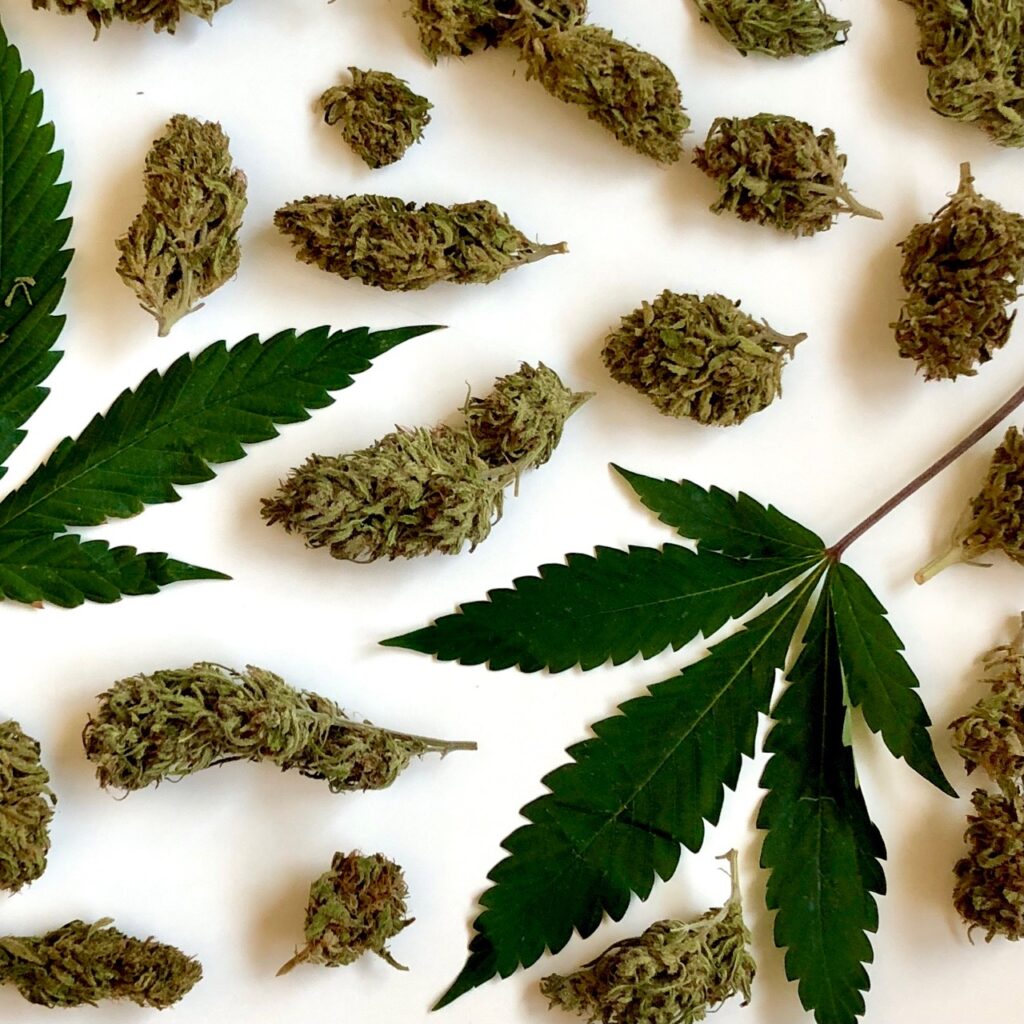
This article originally appeared on Urban Aroma
In its raw plant form, the cannabis plant will not get you high. Try as you might, if you nibbled on some leaves or gnawed on some raw buds, sure, you’d be getting some great fresh terpene expression and some cannabinoids, but you definitely won’t be getting high, and you would reap few of the plant’s medicinal benefits. So how do cannabinoids go from mostly inactive molecular compounds to the powerhouses we know and love? A chemical reaction called decarboxylation – decarbing for short, or just plain ol’ “activating” – is to thank, and it’s an essential step in everything from smoking your favorite flower to making infused foods at home. Before decarbing, cannabinoids are in what’s known as an acid form – THCA and CBDA, for example – and these cannabinoids interact very weakly at the CB1 and CB2 receptors throughout the body. THC, however, has a high affinity for reacting at these receptor sites (CBD to a lesser degree), making the decarbing process key to unlocking the high you’re seeking from your bud. As decarbing occurs, cannabinoids release a carbon atom from their chains, converting THCA to THC, and allowing the cannabinoids to bind to the CB1 receptors. All of that science aside, in practice, decarbing happens every time you light your bowl, as heat initiates the reaction. This reaction is instantaneous during smoking, and by the time the cannabinoids enter your bloodstream, they’ve been converted to their active forms. Vaping and dabbing also utilize heat to activate cannabinoids in concentrates, and need to be decarbed to be activated.
Tips and Tricks for Decarbing Your Cannabis
While decarbing during vaping or smoking takes little more than the touch of a button or the flick of a Bic, edibles production requires a more fine-tuned and precise approach. There are several different ways to decarb for your at-home infusions, and we’ll explore those below, but first, a few key things to note:
- You must decarb your weed before you make your infusion! Activating the CBD or THC in your flower before the infusion process is essential to make sure you’re getting the experience – and dosage – you expect. This goes for working with both flower and concentrates.
- Time and temperature matter! While there is a lot of conflicting data about the exact best practices for activating cannabinoids, the general consensus is a slow and low heating process. Also, cannabinoids decarb fully at different temperatures! If you’re working with a high-CBD strain, for example, you’ll want to decarb your cannabis at a lower temperature to activate the CBD. Time and temperature best practices are the same for flower and concentrates.
- Heating your cannabinoids too long will inactive the compounds and result in the oxidization into CBN, another cannabinoid we recognize as being sleep-inducing and from “old weed.”
4 Methods For Decarbing At Home
The Classic: Cookie Sheet in the Oven
Method: On a parchment-lined cookie sheet, evenly spread out a layer of cannabis. Allow to heat in the oven for 45 minutes to an hour at 220 degrees. Pros: It’s pretty simple! Cons: If your neighbors didn’t know you smoked weed, they will now! This is a highly aromatic process! Tips: Because ovens run at varying temperatures, getting the heat right can be tricky. Placing the cookie sheet on the rack in the center of your oven will help keep things even! When done, your cannabis should look slightly toasted brownish and feel dry to the touch.
The Fancy Chef Process: Sous Vide
Method: For this process, you’ll need a sous vide device — an immersion circulator – along with a large pot and sealable plastic bag. Fill pot with warm water, and place the immersion circulator inside (set to 203 degrees Fahrenheit). Cannabis should be slightly broken up, placed in the vacuum sealed bag, and left in the water bath for 90 minutes. Pros: Also fairly simple, and less stinky than the oven method. Cons: Immersion circulators are not inexpensive! Tips: For all things sous vide and cannabis, check out cannabis chef Monica Lo at sousweed.com for the best techniques and recipes.
Mason Jar in Water
Method: You’ll place your broken-up cannabis into a sealed jar, and fill up a pot of water about halfway. Let the jar simmer in the water for 90 minutes. Pros: Inexpensive equipment and odor control. Cons: You’re not able to fine-tune the temperature as much, and it can be difficult to fine-tune if you’re looking to tease out certain cannabinoids. Tips: Be careful not to place the jar in water that is too hot, or you run the risk of it breaking.
The High Tech Device
Method: Buy an Ardent! Push a button! This innovative device relies on technology and science to make decarbing as simple as possible. Simply place your weed in, push a button, and let the machine do all the work! The Ardent line takes things a step further by also offering an infusion setting. Pros: Could not be easier, and completely smell-proof. Cons: Expensive. Tips: Ardent even features automatic settings for CBD and THC, so you can create cannabinoid-specific infusions.